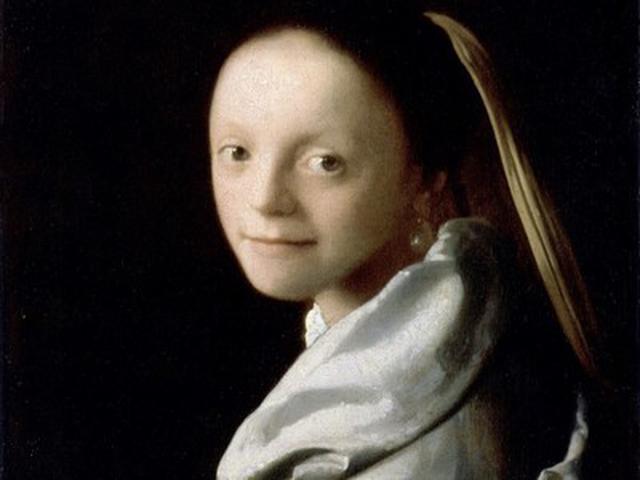Study of a young woman

The painting of a Portrait of a Young Woman is very similar in style to Vermeer's most popular painting, Girl With Pearl Earring. Both works of art transcend pieces that manifest the artist's impeccable ability to demonstrate his skill and knowledge in art. Both works of art seem to reflect a realist style that would gain popularity towards the end of the 19th century, but they already incorporate the critical elements.
The portrait of a young woman is based on the side as the girl sits sideways looking directly at the viewer while catching their gaze. The painting was completed in the middle of the artist's career, as he had found his own style and technique. The soft brush strokes that fill the canvas generate small details on the woman's face.
The round face of the young women is illuminated by a light source that comes from the right side of the canvas, as do other classic pieces by the artist. The model's round face is illuminated showing her features with round, wide eyes and a small, sharp nose. Her thin lips cover the canvas as she smiles at the viewer in a light peach tone.
Vermeer had strategically based the portrait on the light source on the left side, as the girls' faces are outlined. A glimpse of her ears is shown on the right side of the canvas, with a golden veil unrolling from her head. The young woman is covered in a gray cloth that hangs around her shoulders in a loose fit. The artist continues to texturize the fabric that swings across the girl by lighting and contouring it based on the light source on the upper left side.
As a renowned Dutch artist during the Golden Age era, Johannes Vermeer made a name for his famous works, such as View of Delft and Little Street. Perhaps, this was all due to the fact that he was born in Delft, in the Netherlands. Therefore, his inspirations mainly came from where he grew up, which had a great impact on his life and career as a painter. His other paintings include The Concert, Women with a Jug of Water, and Girl Asleep at the Table. These were his popular masterpieces as his style evolved after his experience as part of the Delft Painters' Guild in his hometown.
© Tourblink